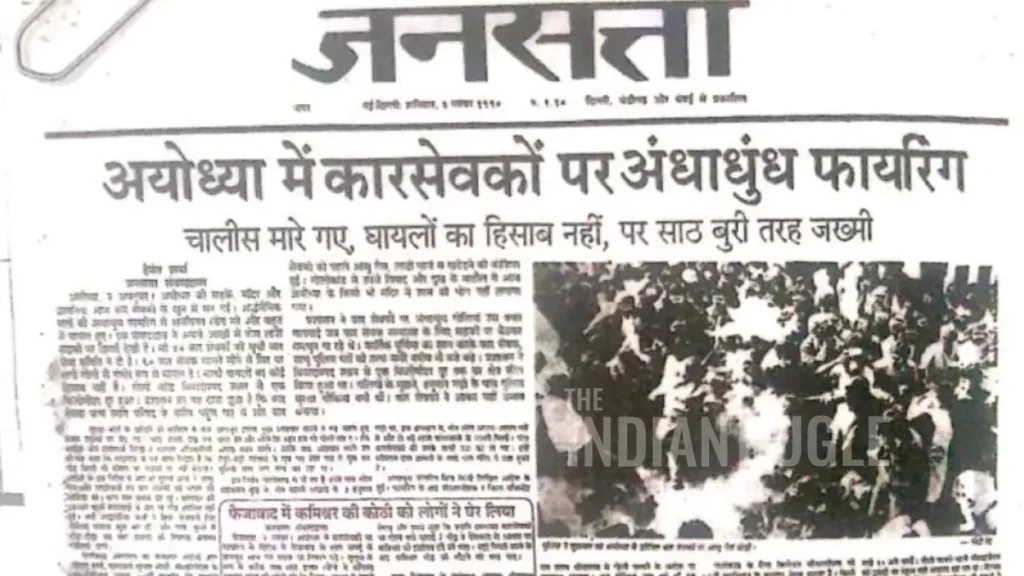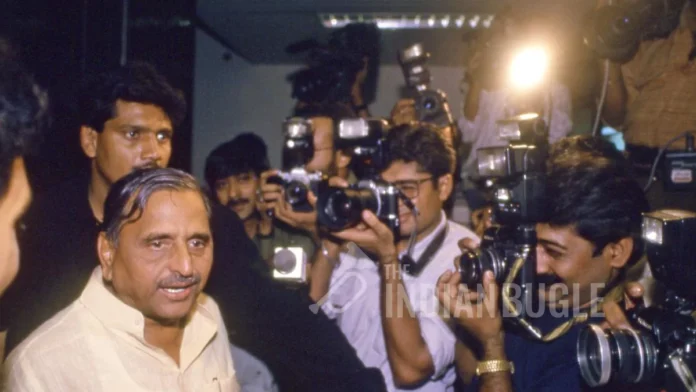The Grand Ram Mandir in Ayodhya is nearing completion, a source of great pride and joy for the entire nation. However, the journey to claim this glory has neither been short nor easy, marked by years of struggle, sacrifice of lives, and, most importantly, undying devotion to Lord Shri Ram.
As we prepare to welcome Maryada Purushottam Shri Ram, let’s remember the innocents who lost their lives in this long battle to reclaim the birthplace of our idol.
Lal Krishna Advani, one of the main crusaders of the Ram Janmabhoomi Movement in the ’90s, mobilized people to the Ayodhya site through his rath-yatra, with the support of RSS, VHP, and Shivsena. The then CM of Uttar Pradesh, Mulayam Singh Yadav, faced a delicate situation, aiming to prevent any harm to Muslim sentiments, a core vote bank for the Samajwadi Chief Minister.
By October 21, 1990, Ayodhya witnessed a pouring of Kar Sevaks from different parts of the country. The chants of Jai Shri Ram echoed through the narrow streets, reaching the CM’s office. Fifty-year-old Mulayam Singh Yadav, an ex-school master and Chief Minister for a few months, had already warned, ‘Ayodhya me ek parinda bhi par nai maar payega.’
On the morning of October 30, Ayodhya was gripped with fear and uncertainty. On the CM’s behest, paramilitary forces were deployed, converting the holy city into an impregnable fortress. Borders were sealed, and a four-day curfew was enforced.
As the Kar Sevaks reached Hanumangarhi temple, mere 500 meters from the birthplace of Shri Ram, the gathering, including pilgrims for the yearly Chaudah Kosi Parikrama on Kartik Purnima, started moving towards the site swiftly, unaware of the potential consequences.
Heckled by this unanticipated situation, the CM took a call that would leave a dark mark in history. By noon, police received orders from Mulayam Singh Yadav to open fire on the unarmed Kar Sevaks. Many Kar Sevaks lost their lives in this brutal and incredulous firing. The state government claimed that 5 Kar Sevaks lost their lives, but in reality, the number was 11.
After this, a weird silence spread in the city of Shri Ram. The news of this nerve-chilling incident was not reported by any major press or media. But the murmurs of this massacre traveled through the entire country. This led to the pouring of more Kar Sevaks in Ayodhya from different parts of the country.
In the next 72 hours, a sea of Kar Sevaks gathered near the Hanumangarhi temple. Following the orders of the CM, the forces were left with no choice but to open fire on the Kar Sevaks once again. Unarmed, undisturbed, and unafraid, a group of Kar Sevaks who were sitting on the streets of Ayodhya and chanting Ram Dhun met with brutal and unbridled firing from the Uttar Pradesh police forces. The forces didn’t even warn them once. Among the dead were the Kothari Brothers, who had come to the city of Ram all the way from Kolkata. They held the distinction of hoisting the bhagwa dhwaj on the tomb of Babri Masjid just two days prior.

By the evening of November 2nd, around 40 Kar Sevaks had lost their lives, turning the waters of the Saryu river red. None of the Karsevaks sustained injuries to their legs; all were targeted with shots to the head and chest. This suggests that the security personnel deliberately aimed to kill rather than merely injure. The Tulsi crossing transformed into a battleground, its streets drenched in the blood of the Kar Sevaks. The Kothari brothers were forcibly dragged from the Digambar Akhara and shot in the head and neck. Security forces entered the Digambar Akhada and fired indiscriminately at the Sadhus present.

To suppress the news of this casualty, the police had disposed of deceased bodies, either by cremating them at undisclosed locations or by discarding them into the Saryu River in sacks. The information about the shootings was largely suppressed in the Indian media. Chief Minister of Uttar Pradesh earned the nickname ‘Mulla’ Mulayam Singh for his pro-Muslim stance during the incident. What happened in the next two years is something which we all are aware of.
While we prepare to welcome Ram Lalla in Ayodhya, let’s not forget the wounds of the past that may never fully heal.
